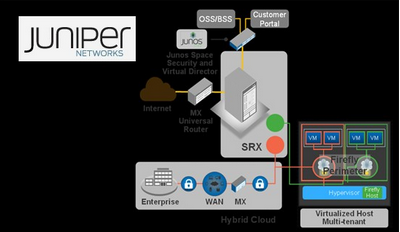MapR Technologies, a start-up based in San Jose, California, raised $110 million in venture funding for its distribution for Apache Hadoop software.
 MapR has significant production Hadoop environments in financial services, healthcare, media, retail, telecommunications, and Web 2.0 companies. The financing will be used to continue growth in the big data and analytics segment, especially to fund additional engineering resources and support open source projects, such as Apache Drill, Hadoop 2.2 with YARN, and Apache Spark.
MapR has significant production Hadoop environments in financial services, healthcare, media, retail, telecommunications, and Web 2.0 companies. The financing will be used to continue growth in the big data and analytics segment, especially to fund additional engineering resources and support open source projects, such as Apache Drill, Hadoop 2.2 with YARN, and Apache Spark.
Google Capital led the $80 million equity financing. Also participating was Qualcomm Incorporated, through its venture investment group, Qualcomm Ventures, and existing investors including Lightspeed Venture Partners, Mayfield Fund, NEA and Redpoint Ventures. In addition to the equity financing, MapR completed a debt facility of $30 million led by Silicon Valley Bank.
"Google has a long-standing commitment to Hadoop, making Google Capital an ideal investor for MapR. This investment round recognizes our customers’ rapid adoption, their tremendous results and ROI, and also the capital efficiency of our business model,” said John Schroeder, CEO and co-founder of MapR Technologies. “It’s extremely gratifying to bring these high-caliber strategic investors on board, including Qualcomm who is the leader in the mobile ecosystem and also at the forefront of the Internet of Things, to help us accelerate growth and position the company for global leadership. Our installed base of more than 500 paying licensees provides a strong foundation and we are excited to move forward with the tremendous resources from our new and current financial investors.”
“Hadoop is a cornerstone for the big data ecosystem, and MapR has demonstrated its leadership in the space,” said Albert Wang, director, Qualcomm Ventures. “We invested in MapR because of the strength of its technology in leveraging the expanding Internet of Things and providing immediate business benefits."
http://www.mapr.com/company/press-releases/mapr-closes-110-million-financing-led-google-capital
 MapR has significant production Hadoop environments in financial services, healthcare, media, retail, telecommunications, and Web 2.0 companies. The financing will be used to continue growth in the big data and analytics segment, especially to fund additional engineering resources and support open source projects, such as Apache Drill, Hadoop 2.2 with YARN, and Apache Spark.
MapR has significant production Hadoop environments in financial services, healthcare, media, retail, telecommunications, and Web 2.0 companies. The financing will be used to continue growth in the big data and analytics segment, especially to fund additional engineering resources and support open source projects, such as Apache Drill, Hadoop 2.2 with YARN, and Apache Spark.Google Capital led the $80 million equity financing. Also participating was Qualcomm Incorporated, through its venture investment group, Qualcomm Ventures, and existing investors including Lightspeed Venture Partners, Mayfield Fund, NEA and Redpoint Ventures. In addition to the equity financing, MapR completed a debt facility of $30 million led by Silicon Valley Bank.
"Google has a long-standing commitment to Hadoop, making Google Capital an ideal investor for MapR. This investment round recognizes our customers’ rapid adoption, their tremendous results and ROI, and also the capital efficiency of our business model,” said John Schroeder, CEO and co-founder of MapR Technologies. “It’s extremely gratifying to bring these high-caliber strategic investors on board, including Qualcomm who is the leader in the mobile ecosystem and also at the forefront of the Internet of Things, to help us accelerate growth and position the company for global leadership. Our installed base of more than 500 paying licensees provides a strong foundation and we are excited to move forward with the tremendous resources from our new and current financial investors.”
“Hadoop is a cornerstone for the big data ecosystem, and MapR has demonstrated its leadership in the space,” said Albert Wang, director, Qualcomm Ventures. “We invested in MapR because of the strength of its technology in leveraging the expanding Internet of Things and providing immediate business benefits."
http://www.mapr.com/company/press-releases/mapr-closes-110-million-financing-led-google-capital
- In March 2014, Cloudera confirmed that its latest funding round, which included a strategic investment from Intel, amounted to $900 million. This financing round includes the previously-announced $160 million of funding from T. Rowe Price and three other top-tier public market investors, Google Ventures, and an affiliate of MSD Capital, L.P., the private investment arm of Michael Dell and his family, and a significant equity investment by Intel that gives them an 18% share of Cloudera.
Cloudera offers enterprise analytic data management software powered by Apache Hadoop, which is the underlying technology behind a growing number of Big Data projects.

















































